Last night, I watched Kenji Mizoguchi's A Geisha, aka Gion Bayashi.
It is a great and heartbreaking film, sad without being sentimental.
I’ve started to like Mizoguchi. So far I’ve seen 3 films: this one and Ugetsu Monogatari are great; Miss Oyu is also very good, and deeply sad (I just don’t really like the ending and the face of the actress playing Oyu).
Over time, I might even prefer Mizoguchi to Kurosawa. In the West, Kurosawa has always been more renowned and popular, with an enormous influence; his greatness is undeniable; Ran and The Bad Sleep Well will always remain my personal favourites (The Bad Sleep Well is simply perfect). However, Kurosawa can sometimes be rather didactic and sentimental. One of his worst films is Dreams, which, visually dazzling as it is, feels contrived, falsely coherent, and intolerably preachy—going against the nature of dreams. Not only so, I’m one of the few people who love Kurosawa but don’t like the acclaimed Ikiru: it’s great until the death of the protagonist; the sequence at the funeral is too lengthy and repetitive to be effective and moving, after a while, it all becomes false.
When I watched Ugetsu, Miss Oyu and then A Geisha, there was not a false note. A Geisha touched the depths of my soul—the story of the 2 geisha is haunting.
_________________________________________
I’ve noticed a few things about Mizoguchi:
1/ He likes long takes, and a moving camera.
2/ He rarely uses close-ups, though it could be a Japanese thing—I hardly see close-ups in Kurosawa and Ozu either, I’m not sure about other directors in that period like Hiroshi Teshigahara or Shohei Imamura.
3/ It looks like he moves the actors around in a scene, and then moves the camera accordingly.
_________________________________________
Mizoguchi’s A Geisha reminds me of how much I hated Memoirs of a Geisha.
1/ Think about it: Memoirs of a Geisha is a Hollywood film about geisha, in which the 3 leading geisha roles go to 2 Chinese actresses (Zhang Ziyi and Gong Li) and a Chinese Malaysian actress (Michelle Yeoh), and all dialogue is in English. Generally speaking, to Westerners, Asians look all the same, but it really bugs me because as an Asian, I can tell that Chinese and Japanese people have different facial expressions, gestures and mannerisms. I’m also too familiar with Gong Li and Zhang Ziyi to convince myself to accept them as geisha.
In addition, for a film that does a lot of explaining about the whole geisha tradition, they get lots of things wrong regarding hairstyles and makeups, which is better explained here: https://culturedid.wordpress.com/2016/09/18/memoirs-of-a-geisha-what-they-got-wrong-and-what-they-got-right/
When some people get offended about white people wearing dreadlocks or cornrows, or wearing kimono, and call it cultural appropriation, I see it as a trifle, a non-problem, because it doesn’t affect anyone—the concept of cultural appropriation is nonsensical, in my opinion. But it’s different in the case of Memoirs of a Geisha. I don’t care that the director’s a white American; I despise it because of the inaccuracies, the wrong facial expressions and mannerisms, the misrepresentation, and the apparent carelessness and lack of respect. Nobody said a word about the America in Brokeback Mountain, nor the England in Sense and Sensibility, even though the director is Ang Lee, a Taiwanese.
On my course, a guy made a short documentary called Kungfu Postman. The guy in the film does karate; when it’s pointed out that kung fu and karate were different things, the director said the guy did lots of things: karate, judo, etc. With all due respect, and I think the director’s a nice guy, I hate that thoughtless attitude—karate and judo are Japanese, kung fu is Chinese, you can’t casually lump them together as “well, Asian… same thing”.
2/ Memoirs of a Geisha obsessively follows the character’s training, her dance lessons, her getting dressed and wearing make-ups, the seductive charm of geisha—living works of art…
A Geisha has none of that glamour. I was initially surprised to see that Mizoguchi didn’t really bother about a maiko’s training (maiko is an apprentice geisha). There’s no need. He’s interested in the soul of his characters, in the restrictions imposed on “the symbol of femininity in Japan”, in the difficulties of geisha and their struggle to maintain dignity and personal rights. It is very Japanese, but at the same time, also universal.
Memoirs of a Geisha, at the core, is a conventional, formulaic love story. The problems of its characters are surface-level, there can be some very visually satisfying scenes such as the dance scenes but all the stuff about geisha seem to be there like a fetish—something foreign, something exotic. The conflicts are Hollywood (after all, it’s based on a novel written by another white man). Why some people like it, I don’t understand—it’s empty, and banal.
Pages
▼
Saturday, 29 July 2017
Thursday, 27 July 2017
Alejandro Jodorowsky's The Dance of Reality


The Dance of Reality is a very weird film. By that, you must understand that it’s very strange, bizarre and extreme, because I think I have a high tolerance for weirdness. It’s a stew of a film—a quasi-biographical film, reminiscent of Fellini’s Amarcord, mixed with surrealism and metaphor. With a tremendous imagination and a talent for crazy allegories, Jodorowsky creates a film full of striking images, bold colours and grotesque scenes: a boy throws a rock into the ocean that causes a wave dumping thousands of sardines all around him; a woman urinates over her husband to cure him of a fatal infection; a man decides to die, walks down to his grave and draws his last breath; a woman ties a stone to some balloons to carry her message; a man, with fear, becomes paralysed in the literal sense, etc. It’s no wonder that Jodorowsky said “I did not want LSD to be taken. I wanted to fabricate the drug's effects.”
However, it’s not weird for the sake of being weird. Even though the film has its longueurs, partly because the mother sings every single line like an operatic aria, and it’s not something I’d like to watch over and over again, it’s a very poignant film. Jaime the father, a Stalin-obsessed Jewish man, goes on quest to assassinate the Chilean dictator Ibáñez, only to realise later that Ibáñez and his hero Stalin are the same, and that Jaime himself is a tyrant. It’s not Ibáñez, but the tyrant in himself, that he has to destroy—that gives the film extraordinary emotional power. The Dance of Reality is, in a sense, a fantastical coming-of-age tale where it’s not the child but the father that learns and grows. The film is grotesque, but fascinating, and wonderfully human.
Monday, 24 July 2017
Robert Altman's 3 Women
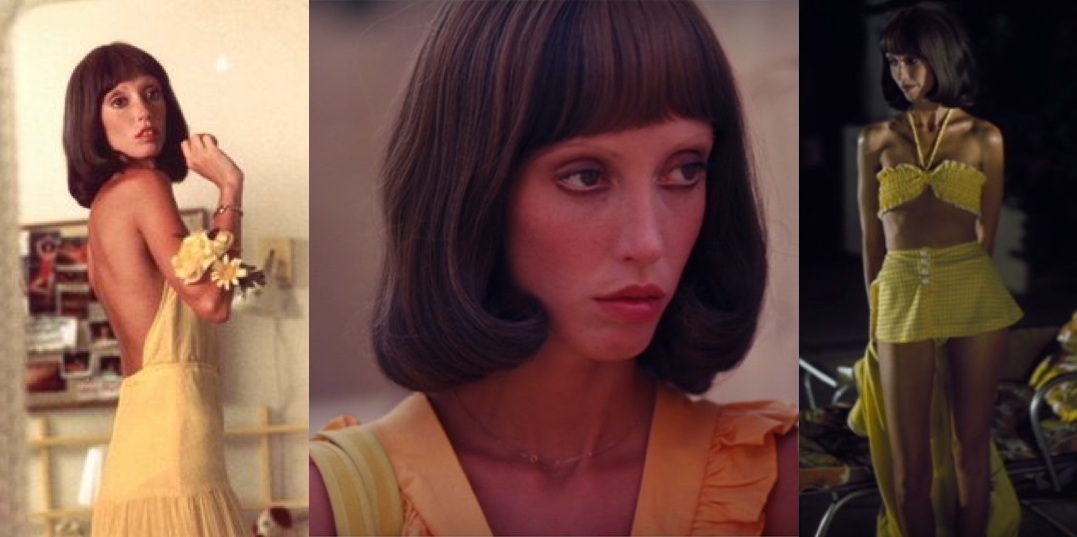
Source
Brief summary: Pinky Rose (real name Mildred) is enamoured of her colleague and roommate Millie (another Mildred), who is perfect in the childlike eyes of Pinky Rose and in the eyes of Millie’s clueless self. Everything becomes bizarre as Pinky Rose, after an incident, starts to “steal” Millie’s identity. In the background there’s a mysterious pregnant woman named Willie who rarely speaks and paints unsettling and haunting murals. Which is reality? Or is it all a dream? Are the 3 women separate, or part of the same person?
3 Women is an avant-garde film that came from Robert Altman’s dream and got some inspiration from Persona. If you haven’t watched it, you should read Roger Ebert’s review. If you have watched it, read it too—it is one of his most insightful articles.
Having watched it only once, I can’t write about its many hidden meanings, so I will only write about Mildred “Millie” Lammoreaux, which is probably Shelley Duvall’s best performance (even though people usually think of The Shining). Millie seems to be in a constant state of preparing for dates and dinners that never happen; she imagines that everyone enjoys her company and men are crazy about her, and babbles on about anything without noticing that people ignore or even laugh at her among themselves. Never have I seen in films any woman so desperate and deluded. The awkward silences, the ramblings, the cheerful greetings that are always ignored, the unnoticed laughs, the ridiculous one-piece suit, the sheer inability of the character to see herself and to perceive other people’s reactions, etc.—many moments are so cringy that I feel uncomfortable. This is certainly one of the most interesting and memorable female characters on screen.
Interestingly, when Pinky starts to steal her identity and take over her world, the persona she adopts is not the real Millie, but the person Millie sees herself as—fun, confident and popular with the men. As Millie, Pinky’s better than the real Millie.
This film is a must-watch.
Saturday, 22 July 2017
On Persona, Cries and Whispers and Fanny and Alexander, and the genius of Ingmar Bergman
Sometimes it’s sad to think about the reputation of some great artists. Ingmar Bergman has always been seen as the gloomy Swede, forever dealing with God’s silence, people’s inner demons, and hateful relationships; his films have a reputation for being difficult and challenging, and in the eyes of detractors, are seen as pretentious and self-indulgent or boring and depressing or both; at the same time, his films, Persona especially, are much analysed and written about, and they deal with religion, psychology and philosophy. All these things combined make it seem like his works are inaccessible and uninteresting—tedious, heavy in ideas, misanthropic and depressing in tone, dry, devoid of life, perhaps even dated and visually boring. At least that was the misconception I had before I watched Bergman, and the impression I got when I first approached his works without having the right mindset.
Now that I’ve got into the world of Bergman, everything has changed. Before being a psychologist and a thinker, Bergman’s a master technician, a great visual storyteller, and a true artist who saw cinema as a serious art form, who tested and expanded the possibilities of cinema, and who constantly reinvented himself even while dealing with the same themes throughout his career.
Speaking of visuals alone, his black-and-white films are magnificent, especially his collaborations with Sven Nykvist such as Persona, Winter Light and Through a Glass Darkly. I don’t understand people who refuse to watch black-and-white films—colour can be a distraction, the absence of colour draws the viewer’s attention to the composition of the frame and the lighting, and helps notice the contrast and all the shades.
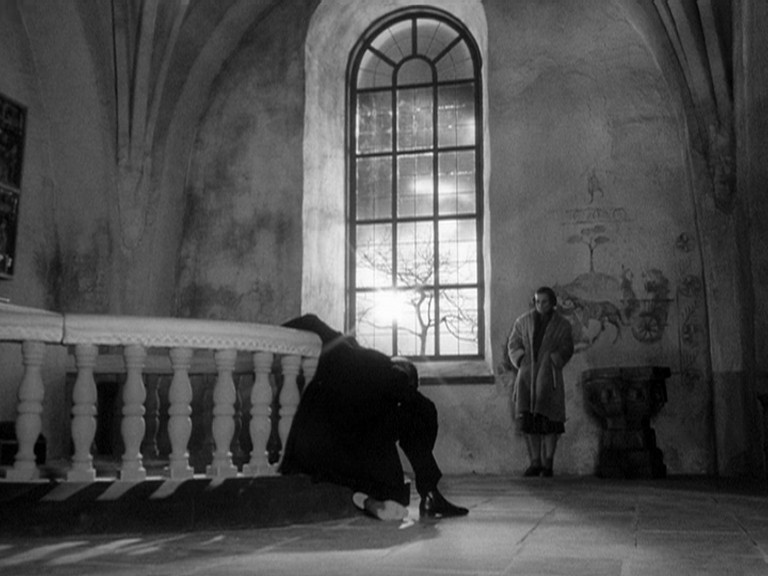
Then when he makes colour films, he makes the best use of colours. Cries and Whispers is the best example. The film is dominated by 3 colours, red, white and black. The main colour red conveys passion, hatred, blood, violence, death and extreme emotions, effectively used not only in production design and costumes but also in fade-outs (instead of black or white fades), a daring choice, and the few (2, I think) scenes with green grass in the film, by contrast, create a strong sense of claustrophobia in the indoor scenes, which heightens the intensity and at the same time makes the viewer feel that the sisters are somehow imprisoned by the way they are.



Lately, I’ve just watched Fanny and Alexander, the 5-hour version. As in Cries and Whispers, the cinematographer is the wonderful Sven Nykvist. It is 1 of the most visually beautifully films I have ever seen. Every single frame is like a painting (there’s only another film that makes me feel that way, Barry Lyndon, but the film as a whole is hollow). The colours and lighting are perfect, Fanny and Alexander looks magical in all the scenes at the Ekdahls’ house, and there’s a kind of balance and harmony in every frame that I can’t quite explain—I can only say it’s very pleasing and even exhilarating.
More importantly, Ingmar Bergman experiments and reinvents himself. Persona, written when he was in the hospital, was unlike anything he had previously made; and unlike anything I’ve ever seen. It’s new and interesting on many levels, but 1 of the most discussed things is the film reel at the beginning and ending of the film, and how the film cracks and burns in the middle—Persona is a film that reminds the audience that it is a film. However, it doesn’t make me feel the way I feel about Godard sometimes—breaking rules for the sake of being irreverent and experimental. The reminder of the artifice of film goes with the mental breakdown of the actress played by Liv Ullmann, and her silence because of her feeling about the crudeness of art, the artificiality and insincerity of her profession as an actress, and all the masks she wears in real life. The crack in the middle of the film denotes the breakdown, the dissociation of the nurse—when she on the 1 hand betrays the principle of her profession, and on the other hand, loses her sense of identity.
Together with Persona, Cries and Whispers is another film where Ingmar Bergman felt he went as far as he could go. A film about dying, and death, and people who are alive but inside already dead, and about a person who has died but is stuck halfway, Cries and Whispers is his most painful and intense film. As Roger Ebert has put it, “to see it is to touch the extremes of human feeling”. His use of the colour red is not merely symbolic—it creates strong emotional and dramatic impact, heightens the intensity, and makes us feel confined and claustrophobic. Nevertheless, it’s not as negative as it sounds—the selfless love and devotion of Anna, the servant, negates the selfishness and heartlessness of the sisters, and in the end, Cries and Whispers, despite everything, is life-affirming.
Then, after about a dozen films, when I thought I knew Ingmar Bergman, I watched Fanny and Alexander. The themes are the same, but the film is different, not only because the film has children and many things are seen through the eyes of an imaginative 10-year-old boy, but also because it’s warm, exuberant and magical, like a fairytale, and Dickensian in many ways (with children, a cruel stepfather that is a bishop, a Jewish art-dealer and money-lender…). It’s a wonderful farewell to cinema. It is full of life, and magic.


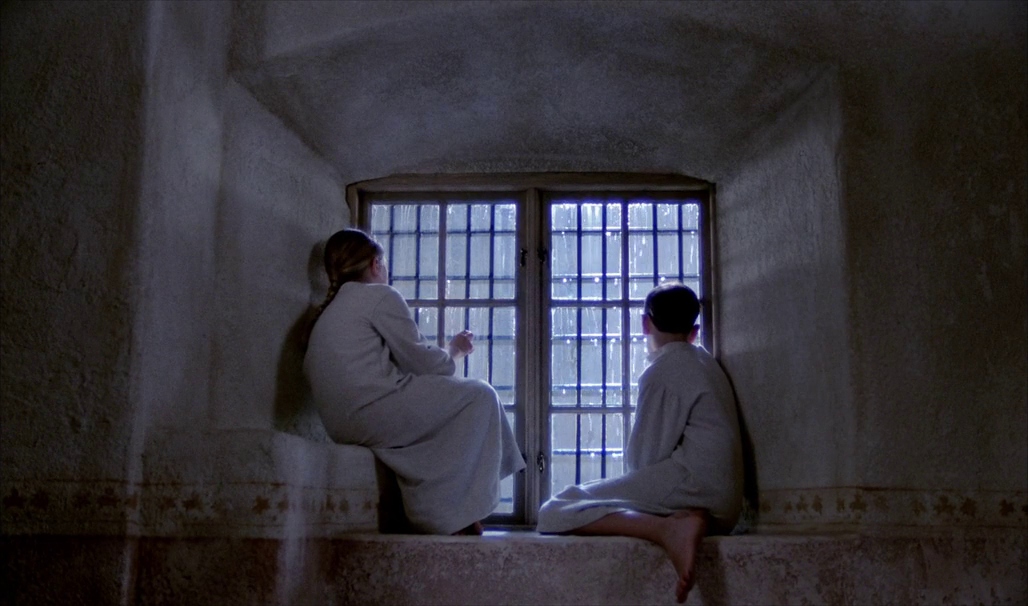
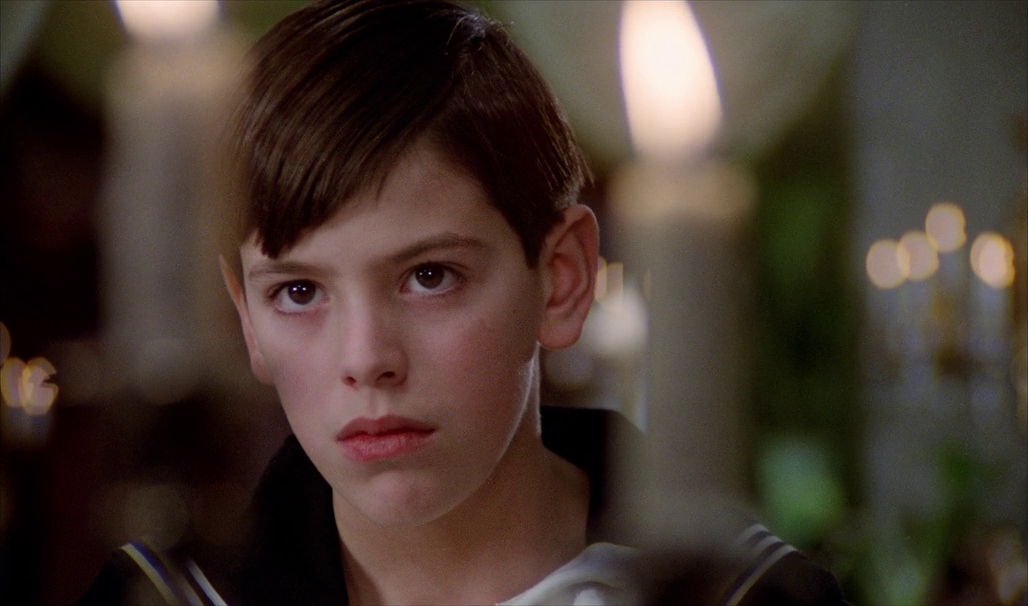



Ingmar Bergman is the greatest of filmmakers.
14/7 was his 99th birthday, and 30/7 is the 10th anniversary of his death.
Now that I’ve got into the world of Bergman, everything has changed. Before being a psychologist and a thinker, Bergman’s a master technician, a great visual storyteller, and a true artist who saw cinema as a serious art form, who tested and expanded the possibilities of cinema, and who constantly reinvented himself even while dealing with the same themes throughout his career.
Speaking of visuals alone, his black-and-white films are magnificent, especially his collaborations with Sven Nykvist such as Persona, Winter Light and Through a Glass Darkly. I don’t understand people who refuse to watch black-and-white films—colour can be a distraction, the absence of colour draws the viewer’s attention to the composition of the frame and the lighting, and helps notice the contrast and all the shades.
Then when he makes colour films, he makes the best use of colours. Cries and Whispers is the best example. The film is dominated by 3 colours, red, white and black. The main colour red conveys passion, hatred, blood, violence, death and extreme emotions, effectively used not only in production design and costumes but also in fade-outs (instead of black or white fades), a daring choice, and the few (2, I think) scenes with green grass in the film, by contrast, create a strong sense of claustrophobia in the indoor scenes, which heightens the intensity and at the same time makes the viewer feel that the sisters are somehow imprisoned by the way they are.



Lately, I’ve just watched Fanny and Alexander, the 5-hour version. As in Cries and Whispers, the cinematographer is the wonderful Sven Nykvist. It is 1 of the most visually beautifully films I have ever seen. Every single frame is like a painting (there’s only another film that makes me feel that way, Barry Lyndon, but the film as a whole is hollow). The colours and lighting are perfect, Fanny and Alexander looks magical in all the scenes at the Ekdahls’ house, and there’s a kind of balance and harmony in every frame that I can’t quite explain—I can only say it’s very pleasing and even exhilarating.
More importantly, Ingmar Bergman experiments and reinvents himself. Persona, written when he was in the hospital, was unlike anything he had previously made; and unlike anything I’ve ever seen. It’s new and interesting on many levels, but 1 of the most discussed things is the film reel at the beginning and ending of the film, and how the film cracks and burns in the middle—Persona is a film that reminds the audience that it is a film. However, it doesn’t make me feel the way I feel about Godard sometimes—breaking rules for the sake of being irreverent and experimental. The reminder of the artifice of film goes with the mental breakdown of the actress played by Liv Ullmann, and her silence because of her feeling about the crudeness of art, the artificiality and insincerity of her profession as an actress, and all the masks she wears in real life. The crack in the middle of the film denotes the breakdown, the dissociation of the nurse—when she on the 1 hand betrays the principle of her profession, and on the other hand, loses her sense of identity.
Together with Persona, Cries and Whispers is another film where Ingmar Bergman felt he went as far as he could go. A film about dying, and death, and people who are alive but inside already dead, and about a person who has died but is stuck halfway, Cries and Whispers is his most painful and intense film. As Roger Ebert has put it, “to see it is to touch the extremes of human feeling”. His use of the colour red is not merely symbolic—it creates strong emotional and dramatic impact, heightens the intensity, and makes us feel confined and claustrophobic. Nevertheless, it’s not as negative as it sounds—the selfless love and devotion of Anna, the servant, negates the selfishness and heartlessness of the sisters, and in the end, Cries and Whispers, despite everything, is life-affirming.
Then, after about a dozen films, when I thought I knew Ingmar Bergman, I watched Fanny and Alexander. The themes are the same, but the film is different, not only because the film has children and many things are seen through the eyes of an imaginative 10-year-old boy, but also because it’s warm, exuberant and magical, like a fairytale, and Dickensian in many ways (with children, a cruel stepfather that is a bishop, a Jewish art-dealer and money-lender…). It’s a wonderful farewell to cinema. It is full of life, and magic.







Ingmar Bergman is the greatest of filmmakers.
14/7 was his 99th birthday, and 30/7 is the 10th anniversary of his death.
Tuesday, 18 July 2017
18/7/1817- 18/7/2017
Jane Austen died 200 years ago today.
Why do you like Jane Austen? Which of her works are the best in your opinion, and which are your favourites?
Why do you like Jane Austen? Which of her works are the best in your opinion, and which are your favourites?
Mulholland Drive
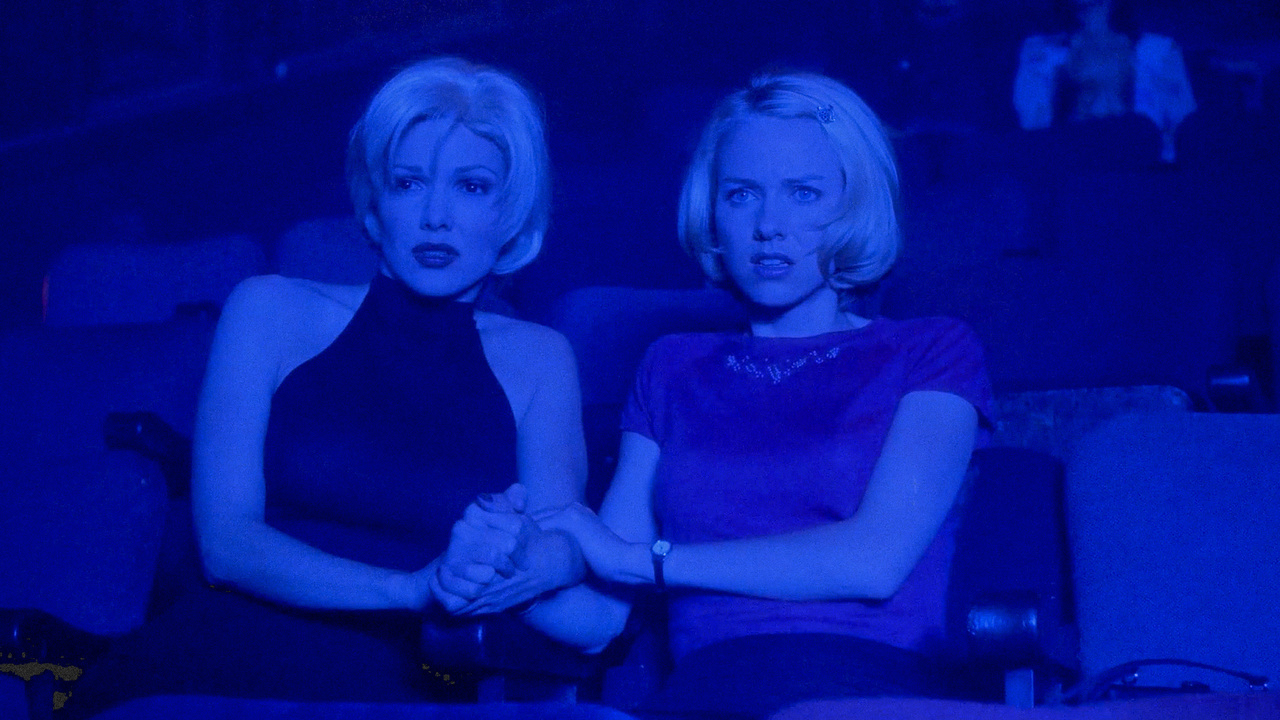
Mulholland Drive, which I’ve just watched the 2nd time, is for me the kind of film that is much better afterwards, when I think about it, than when I was watching it.
Do I agree with BBC’s choice of Mulholland Drive as the greatest film of the 21st century? Probably not. But it’s an unusual film, a daring film—David Lynch plays with the form and experiments with narrative. The key moment of the film is at Club Silencio: a man says “No hay banda. There is no band.”, which is followed by a beautiful and mesmerising performance in Spanish—we are captivated, we are swept up by it, then the singer drops dead onstage whilst the song continues playing, shattering the illusion. We are thrown into reality. The film reminds me of the Ingmar Bergman quote “When film is not a document, it is dream”. There can be other ways to interpret Mulholland Drive, such as alternate realities, but I go with the interpretation that the 1st 2/3 of the film is a dream—Diane’s dream, the rest is reality. As Diane is a failing actress, depressed and destructive after abandoned by the glamorous but selfish and opportunistic Camilla, Betty is the person she dreams to be, an aspiring actress welcomed and praised by everyone in fairytale Hollywood, and Rita is the person she wishes Camilla to be, a distressed person who follows her, has to depend on her, and loves her.
This is an important film.
Monday, 17 July 2017
A review of Woody Allen’s films
Love and Death? Watch Bergman’s The Seventh Seal instead.
Stardust Memories? Watch Fellini’s 8 ½ instead.
A Midsummer’s Night Sex Comedy? Watch Bergman’s Smiles of a Summer Night instead.
The Purple Rose of Cairo? Watch Fellini’s Nights of Cabiria instead.
Radio Days? Watch Fellini’s Amarcord instead.
Alice? Watch Fellini’s Juliet of the Spirits instead.
Husbands and Wives? Or Scenes from a Mall? Watch Bergman’s Scenes from a Marriage instead.
Shadows and Fog? Watch Bergman’s The Seventh Seal, The Magician and Sawdust and Tinsel instead.
Deconstructing Harry? Watch Bergman’s Wild Strawberries instead.
Crimes and Misdemeanors? And Match Point? Read Dostoyevsky’s Crime and Punishment instead.
To Rome with Love? Watch Fellini’s The White Sheik instead.
Blue Jasmine? Watch Elia Kazan’s A Streetcar Named Desire instead.
Interiors? Just watch any Ingmar Bergman chamber drama instead.
Disclaimer: I do like Woody Allen, especially Annie Hall, Love and Death, Manhattan and Crimes and Misdemeanors.
Stardust Memories? Watch Fellini’s 8 ½ instead.
A Midsummer’s Night Sex Comedy? Watch Bergman’s Smiles of a Summer Night instead.
The Purple Rose of Cairo? Watch Fellini’s Nights of Cabiria instead.
Radio Days? Watch Fellini’s Amarcord instead.
Alice? Watch Fellini’s Juliet of the Spirits instead.
Husbands and Wives? Or Scenes from a Mall? Watch Bergman’s Scenes from a Marriage instead.
Shadows and Fog? Watch Bergman’s The Seventh Seal, The Magician and Sawdust and Tinsel instead.
Deconstructing Harry? Watch Bergman’s Wild Strawberries instead.
Crimes and Misdemeanors? And Match Point? Read Dostoyevsky’s Crime and Punishment instead.
To Rome with Love? Watch Fellini’s The White Sheik instead.
Blue Jasmine? Watch Elia Kazan’s A Streetcar Named Desire instead.
Interiors? Just watch any Ingmar Bergman chamber drama instead.
Disclaimer: I do like Woody Allen, especially Annie Hall, Love and Death, Manhattan and Crimes and Misdemeanors.
Friday, 7 July 2017
Ingmar Bergman's note on Cries and Whispers
I’ve just watched Cries and Whispers again. It’s 1 of Ingmar Bergman’s most accomplished films; not sure why I can’t write about it.
But I’ve just found this in Irving Singer’s book Ingmar Bergman’s Cinematic Philosopher: Reflections on His Creativity: in his notebooks, Bergman calls Cries and Whispers a “poem: a human being dies, but as in a nightmare, gets stuck half way through and pleads for tenderness, mercy, deliverance, something. 2 other human beings are there, and their actions, their thoughts are in relation to the dead, not-dead, dead. The 3rd person saves her by gently rocking, so she can find peace, by going with her part of the way.”
That is beautiful.
But I’ve just found this in Irving Singer’s book Ingmar Bergman’s Cinematic Philosopher: Reflections on His Creativity: in his notebooks, Bergman calls Cries and Whispers a “poem: a human being dies, but as in a nightmare, gets stuck half way through and pleads for tenderness, mercy, deliverance, something. 2 other human beings are there, and their actions, their thoughts are in relation to the dead, not-dead, dead. The 3rd person saves her by gently rocking, so she can find peace, by going with her part of the way.”
That is beautiful.
Monday, 3 July 2017
Tarkovsky’s Solaris
Not a review. This is a post for people already familiar with the film.

1/ At the beginning of the film, there are some long nature shots. The scenery is to “reappear” at the end, in a different setting. They are long, but you must take it all in, you must really feel it, in order to see the difference between Earth and Solaris, and to understand the feeling of emptiness and nostalgia of the astronauts. Kris Kelvin appears detached and cold, and doesn’t seem to particularly care for nature, but even he attaches strips of paper to air vents to create the sound of rustling leaves.
2/ Speaking of which, dead silence is intolerable when ears are used to noise. There must always be some sound, in the background, hardly noticeable because taken for granted—absolute silence would be noticeable, and awful. There is no life on Solaris, only a roaring, formless sea.
3/ The detail about the sound of rustling leaves also makes me think about things in life I take for granted.

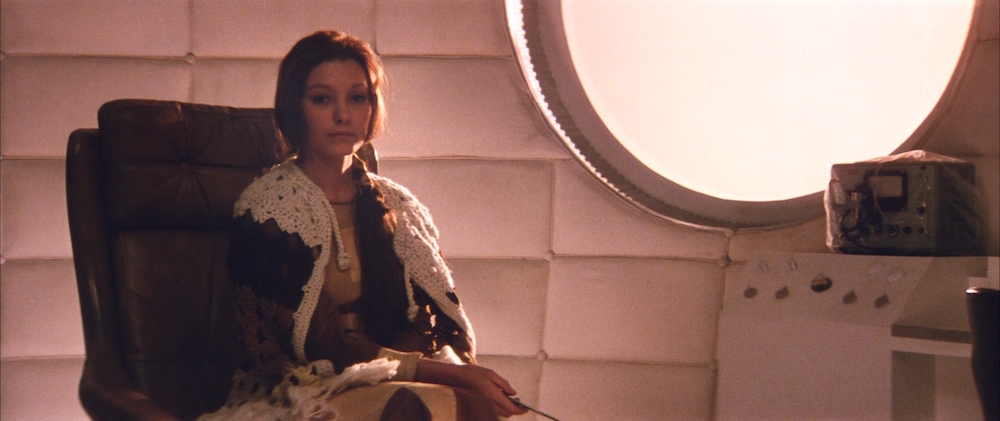
4/ Most interesting in Solaris is the character of Hari—a person that isn’t a real human being, an alien that doesn’t look alien, a being that is no more than a materialisation of Kelvin’s conception of her.
5/ She is Hari but she isn’t Hari. She is a materialisation of the Hari in Kelvin’s head—she has no secrets because he didn’t know her secrets, she is suicidal because the real Hari committed suicide and that’s how Kelvin always thought about her.
6/ Gibarian (the astronaut who commits suicide) mentions the word conscience. That seems to apply for Hari—kill her, she appears again; she destroys herself, then revives minutes later; she’s like an old guilt, never forgotten.
7/ Roger Ebert wrote, in his review of the other Solaris (2002):
But it’s an interesting thought. People can never know each other fully, completely. (Sometimes) we love not the actual person, but our conception of them.
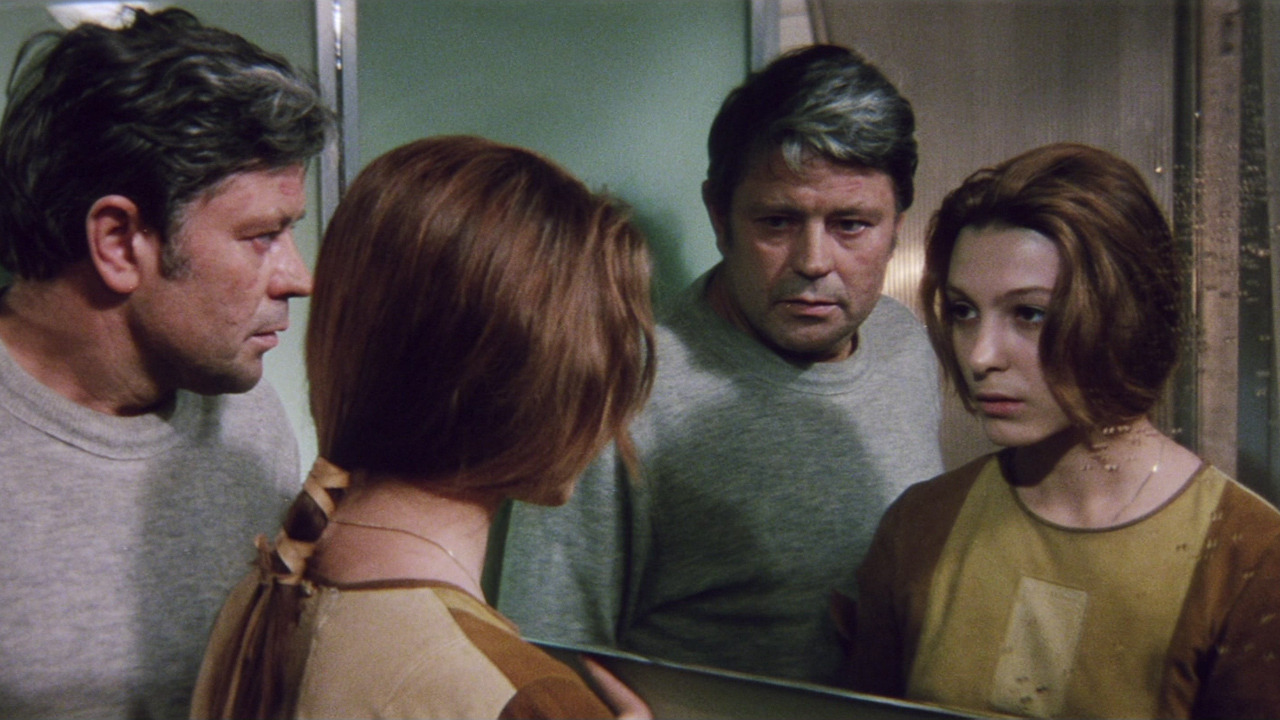
8/ At the same time, Hari is so interesting because she’s becoming real—she becomes so real that she knows she isn’t real. She has self-consciousness.
9/ Solaris is sci-fi so that the genre provides with the planet, but it’s really about psychology and philosophy.
10/ In the end, the scenery we have seen earlier appears again, but it’s not the same place—it’s on Solaris. The entire place is formed by Kelvin’s consciousness alone. What do I think about that? I don’t know. I don’t think I got much out of Solaris after 1 viewing.

1/ At the beginning of the film, there are some long nature shots. The scenery is to “reappear” at the end, in a different setting. They are long, but you must take it all in, you must really feel it, in order to see the difference between Earth and Solaris, and to understand the feeling of emptiness and nostalgia of the astronauts. Kris Kelvin appears detached and cold, and doesn’t seem to particularly care for nature, but even he attaches strips of paper to air vents to create the sound of rustling leaves.
2/ Speaking of which, dead silence is intolerable when ears are used to noise. There must always be some sound, in the background, hardly noticeable because taken for granted—absolute silence would be noticeable, and awful. There is no life on Solaris, only a roaring, formless sea.
3/ The detail about the sound of rustling leaves also makes me think about things in life I take for granted.


4/ Most interesting in Solaris is the character of Hari—a person that isn’t a real human being, an alien that doesn’t look alien, a being that is no more than a materialisation of Kelvin’s conception of her.
5/ She is Hari but she isn’t Hari. She is a materialisation of the Hari in Kelvin’s head—she has no secrets because he didn’t know her secrets, she is suicidal because the real Hari committed suicide and that’s how Kelvin always thought about her.
6/ Gibarian (the astronaut who commits suicide) mentions the word conscience. That seems to apply for Hari—kill her, she appears again; she destroys herself, then revives minutes later; she’s like an old guilt, never forgotten.
7/ Roger Ebert wrote, in his review of the other Solaris (2002):
“In other words, Kelvin gets back not his dead wife, but a being who incorporates all he knows about his dead wife, and nothing else, and starts over from there. […] The deep irony here is that all of our relationships in the real world are exactly like that, even without the benefit of Solaris. We do not know the actual other person. What we know is the sum of everything we think we know about them. Even empathy is perhaps of no use; we think it helps us understand how other people feel, but maybe it only tells us how we would feel, if we were them.”Of course it’s not exactly the same. Because Hari is a materialisation of Kelvin’s conception of her, she’s incapable of shocking him, or even changing. Her self-destructiveness is part of the conception.
But it’s an interesting thought. People can never know each other fully, completely. (Sometimes) we love not the actual person, but our conception of them.

8/ At the same time, Hari is so interesting because she’s becoming real—she becomes so real that she knows she isn’t real. She has self-consciousness.
9/ Solaris is sci-fi so that the genre provides with the planet, but it’s really about psychology and philosophy.
10/ In the end, the scenery we have seen earlier appears again, but it’s not the same place—it’s on Solaris. The entire place is formed by Kelvin’s consciousness alone. What do I think about that? I don’t know. I don’t think I got much out of Solaris after 1 viewing.
Sunday, 2 July 2017
On rewatching Persona; some other remarks on cinema

1/ After the 2nd viewing of Persona, I’m more inclined to go with the literal interpretation—a story between 2 women, as what we see on the screen, instead of the interpretation that they’re 2 sides of the same woman.
2/ Of course, not everything that appears on the screen does happen. Persona is a blend of reality and fantasy. This time, it becomes clearer which sequences are real and which not.
3/ The women are alike. The repetition of the exact same scene, from another angle, creates an effect, makes us feel something different—the 1st time, Alma is trying to speak for Elisabet, analysing her; the 2nd time, she seems to be speaking about herself.
4/ The women are alike; both have been hiding behind a mask (persona) and now cast it away—Elisabet as a loving wife and mother, Alma as a good nurse and happy engaged woman.
5/ A good nurse she is not. Alma lacks the necessary detachment, she lacks the stability and mental strength for the job. She lets bitterness and resentment get the better of her, and betrays the principle of her profession.
6/ Between the 2, Alma is weak, Elisabet is stronger. The nurse herself knows it requires some mental strength to remain silent, refuse to speak.
7/ Ingmar Bergman says, in an interview by Charles Thomas Samuels, “The monk scares her because his conviction is so enormous he is willing to die for it”. That is a much greater mental strength.
6/ Perhaps she realises that that is real suffering, as is the tragedy of the Holocaust. What does she think of? The smallness and insignificance of her own suffering? The catastrophes and injustices of the world? The unfairness of life in general? The falsehoods of all things, which make her fall silent so as not to say a lie?
7/ Of course, the words of the doctor should not be seen as the key to understanding the film.
8/ I shall not attempt to decode the opening sequence of Persona and reduce them to a series of symbols: sexual desire, horror, sacrifice, etc. Film is a visual medium—it’s about image, and how we intuitively respond to it, how we feel about it.
Ingmar Bergman remarks in his essay “Each Film Is My Last”:
“Film is not the same thing as literature. As often as not the character and substance of the 2 art forms are in conflict. What it really depends on is hard to define, but it probably has to do with the self-responsive process. The written word is read and assimilated by a conscious act and in connection with the intellect, and little by little it plays on the imagination or feelings. It is completely different with the motion picture. When we see a film in a cinema we are conscious that an illusion has been prepared for us and we relax and accept it with our will and intellect. We prepare the way into our imagination. The sequence of pictures plays directly on our feelings without touching the mind.”He says again in the introduction to Four Screenplays:
“When we experience a film, we consciously prime ourselves for illusion. Putting aside will and intellect, we make way for it in our imagination. The sequence of pictures plays directly on our feelings. Music works in the same fashion; I would say that there is no art form that has so much in common with film as music. Both affect our emotions directly, not via the intellect. And film is mainly rhythm; it is inhalation and exhalation in continuous sequence. Ever since childhood, music has been my great source of recreation and stimulation, and I often experience a film or play musically.”Andrei Tarkovsky expresses the same idea in Sculpting in Time:
“A literary work can only be received through symbols, through concepts — for that is what words are; but cinema, like music, allows for utterly direct, emotional, sensuous perception of the work.”Many literature lovers speak of films with disdain because, they argue, reading requires you to use your own imagination whereas a film already gives you images which you take passively. That is the mistaken view of people who neither know truly great films nor understand the nature of cinema and what it’s capable of. The 2 media have different strengths and powers (and different limitations). The 1st films I think of as a response to people who think film is an inferior art, or not a serious art form, would be: 8 ½, Persona, Three Colours: Blue and 2001: A Space Odyssey.
9/ I also found, on the internet, this quote by Ingmar Bergman:
“When film is not a document, it is dream. That is why Tarkovsky is the greatest of them all. He moves with such naturalness in the room of dreams. He doesn't explain. What should he explain anyhow? He is a spectator, capable of staging his visions in the most unwieldy but, in a way, the most willing of media. All my life I have hammered on the doors of the rooms in which he moves so naturally. Only a few times have I managed to creep inside. Most of my conscious efforts have ended in embarrassing failure – The Serpent’s Egg, The Touch, Face to Face and so on.Not commenting on Antonioni (who, when I watched a few years ago, didn’t quite get), I agree about Fellini, and a bit more tentatively (because I haven’t seen much) about Tarkovsky and Bunuel. It also applies for Ingmar Bergman. But I’m not quite sure about Kurosawa—that doesn’t sound right to me.
Fellini, Kurosawa and Bunuel move in the same fields as Tarkovsky. Antonioni was on his way, but expired, suffocated by his own tediousness. Melies was always there without having to think about it. He was a magician by profession.
Film as dream, film as music.”
10/ After Ingmar Bergman, I intend to check out Tarkovsky. I’ve seen Solaris.